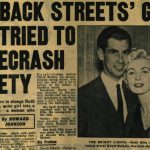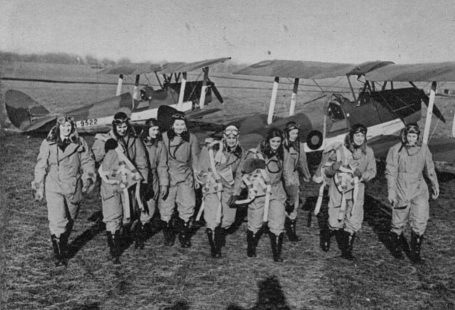In late August and early September 1958, the London area of Notting Hill was the scene of racially motivated riots, in which white, working-class, ‘Teddy Boys,’ and others, displayed hostility and violence to the Black community in the area.
These riots took place ten years after HMT Empire Windrush arrived in Tilbury Docks, carrying 492 Caribbean migrants. Since that moment in history, more and more migrants arrived in Britain from the Caribbean, and they would come to be known as the ‘Windrush Generation.’ They would face discrimination and hardship, in spite of the fact that they had been invited to come to Britain.
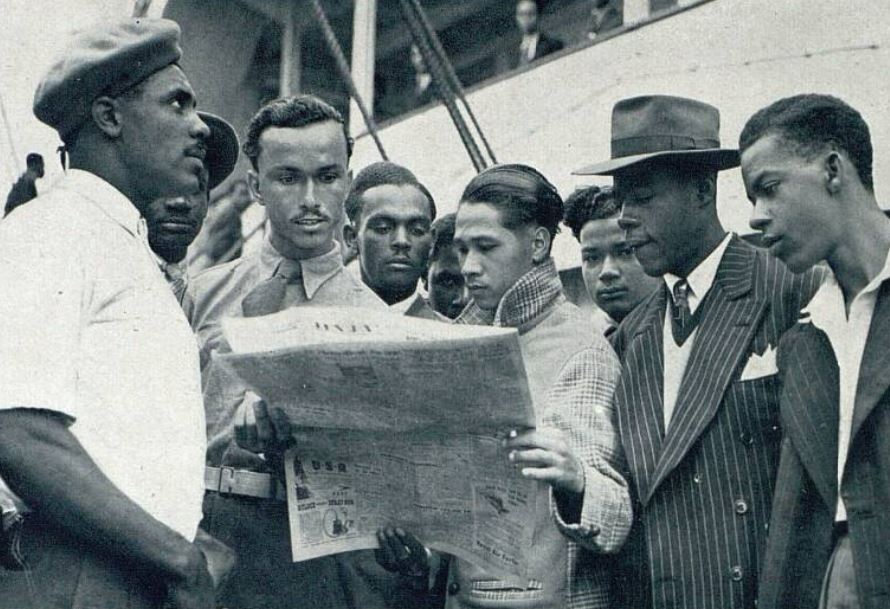
And by this point in the 1950s, groups like Oswald Mosley’s Union Movement and the White Defence League had begun to enflame the racist views held by a minority of white people, in reaction to the increased migration from the Caribbean. This reached a boiling point in the late summer of 1958, when violence broke out across the streets of Notting Hill, which approximately 5,000 Black people had made their home.
Register now and explore the Archive
So in this special blog, using newspapers from The Archive, we will look at what happened during the so-called ‘race riots’ of 1958. We will examine how the British press reacted to the violence, and address the hypocrisy at the heart of British society. Meanwhile, we will look at how the Black community responded, and how the riots partly led to the establishment of the Notting Hill Carnival.
Please be aware, that as this blog uses newspaper reports from the 1950s, that it may reproduce language that is considered offensive and outmoded today, although we have tried to minimise this. Additionally, the violence related in this blog may be upsetting to some.
‘Riot Mobs Out Again’
On 2 September 1958 the Daily News (London) reported on a series of attacks suffered by the Black community of Notting Hill, and the mob violence which had broken out in the streets there. The newspaper detailed how:
Demonstrators surging along Blenheim Crescent, where coloured folk had barricaded themselves in, were met by milk bottles hurled thrown from the roofs of the flats. A petrol bomb was also thrown, but the fire was quickly extinguished.
Violence had initially broken out in the area on 29 August 1958, and on that evening approximately 350 white people were seen in the area, attacking the homes of Black residents. But one of the ‘first to suffer mob violence’ was Seymour Manning, who did not even live in Notting Hill. Indeed, Seymour was from Jamaica, and was now living in Birmingham. He had come to London to visit relatives, as the Daily News (London) related.
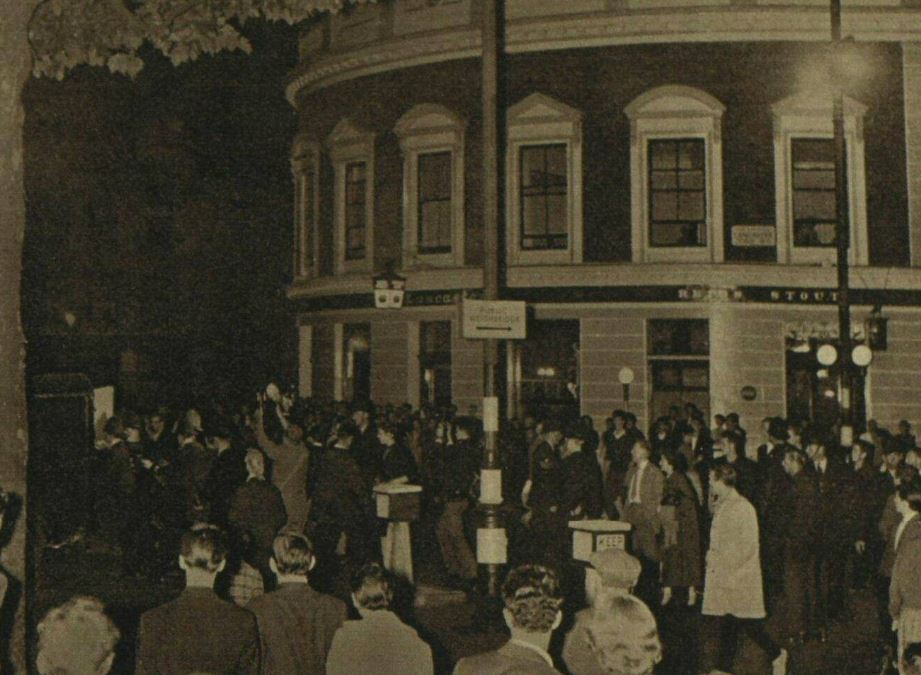
The newspaper described how he was set upon:
He was beaten up by a crowd of men and women. While walking down Bramley Road he stopped and asked the way. Three young men sprang out of a small black van and attacked him. Pursued by crowds, he ran into a greengrocer’s shop owned by Mr. Fred Bloomfield. ‘They are going to kill me,’ he cried.
The greengrocer’s daughter, Mrs. Pat Howcroft, bolted the door. She remarked how ‘I thought the crowd were going to break in and get him out.’
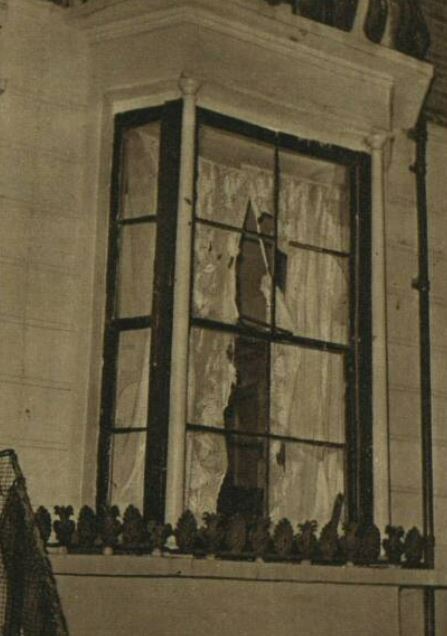
Meanwhile, in Ladbroke Grove, another Black person was assaulted, being ‘kicked in the back as he left the Underground.’ Crowds were gathering, intent on violence. And the violence spread, the Daily News (London) reporting how in Barr Road, a group of men smashed ‘a basement window with an iron-bar,’ and then a lit paraffin lamp was thrown into the room. Thankfully, the ‘elderly’ woman occupant was able to seize the ‘lamp and threw it out.’
‘Too Frightened To Run’
With such violence unfolding on the streets of Notting Hill, police soon swarmed to the scene. The Daily News (London) recounts how police ‘swooped’ into the Portobello Road area, ‘where there were threatening crowds.’ This led to ‘scores of arrests,’ although most of the people arrested were Black, despite much of the violence being instigated by white members of the crowd.
Indeed, ‘a white man in a leather jacket who went into a Bramley Road public-house,’ ominously told reporters how:
‘There’ll be more trouble. There are some houses we want to set on fire. We’ll get [them] out of the country.’
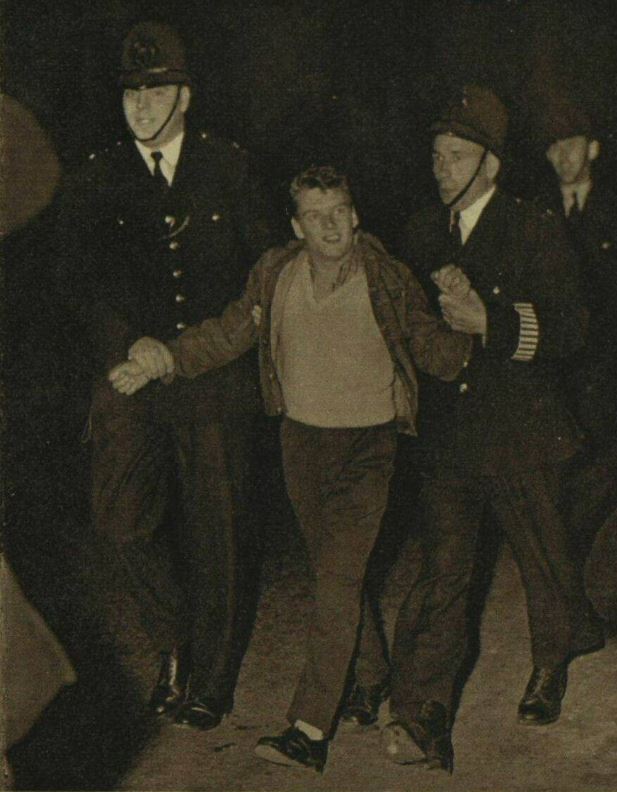
By this point of the evening, there were reports of more violence in Uxbridge Road, Shepherd’s Bush, where ‘a gang of Teddy boys beat-up a coloured man and his German girlfriend. Both were taken to hospital.’ Meanwhile, in the Harrow Road, people stood on the roof of café owned by a Black proprietor, ‘showering milk-bottles down on white passers-by.’
The violence was appalling. One Black resident of Bard Road felt the need to arm herself with an axe, whilst Clive Thorne, a 25-year-old post driver, who had migrated from the West Indies, told ‘a story of terror’ to the Daily News (London):
I am coming home from work. I get off the Tube at Ladbroke Grove. There is plenty of people around the corner where I want to go, so I go the other way. The way I go there are still a lot of Teddy boys around. There are 30 or 40. Some are in cars, some on motor bikes and some on foot. They are shouting things at me. I am too frightened to remember what the things are, but they are angry things.
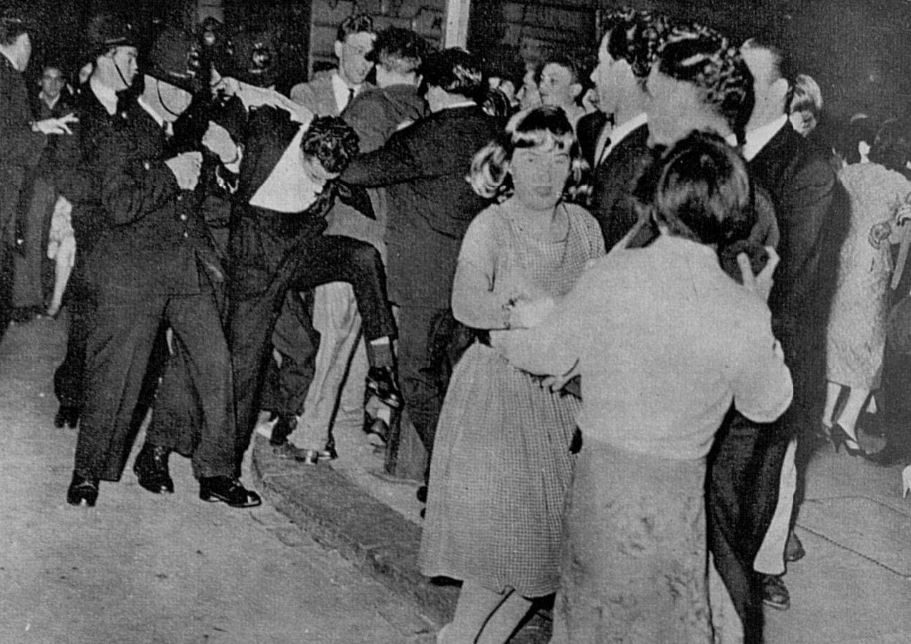
Clive continued narrating his ordeal:
I try to hide from them. I walk pretty fast and try to get out of sight. I am frightened to run in case they drive the cars after me. As I turn the corner this gang of people is still after me. I am very terrified. I live very near but I cannot reach my home.
Then I see this gentleman standing outside his house. He takes me in and phones the police. He is very good, because outside the Teddy boys are still there. I am waiting now for the police to come.
In and amongst the mob there was some kindness to be found, like the person who helped Clive, and the greengrocers who assisted Seymour. But none of this could detract from the abject, racially-charged violence that had broken out in Notting Hill, something that Britain had not witnessed before.
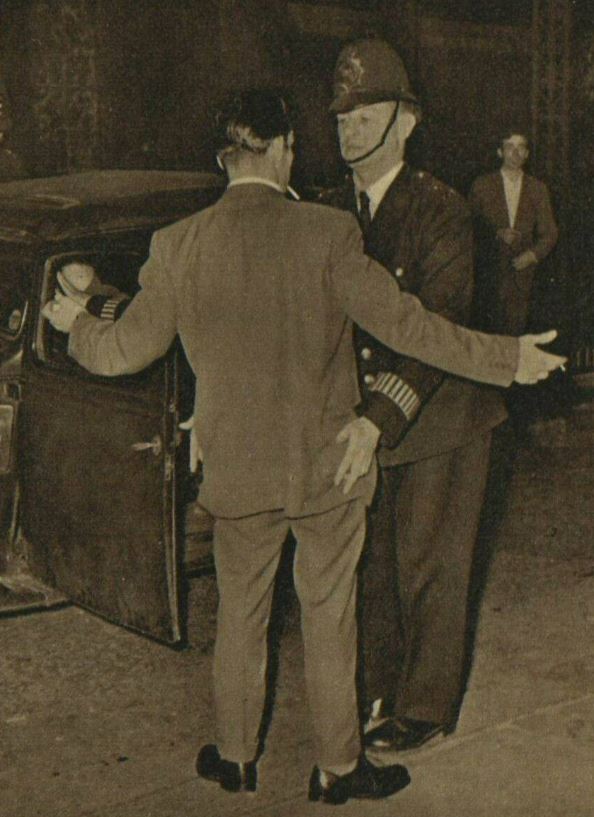
Instruments of Violence
In the aftermath of the initial outbreak of violence, violence that would last until 5 September 1958, the Daily News (London) reported how 35 people had been arrested, half of this number being Black.
Very soon, those who had been arrested would have their cases heard at court, and one such hearing was reported on in the Belfast Telegraph, 3 September 1958:
A foot-long iron bar, a jack-knife, and two milk bottles were produced at Marylebone (London) Court to-day when a number of people appeared on charges arising from disturbances in the Notting Hill and Paddington areas last night. Police described them as offensive weapons taken from a large crowd of people who were in a ‘hostile mood’ in Notting Hill.
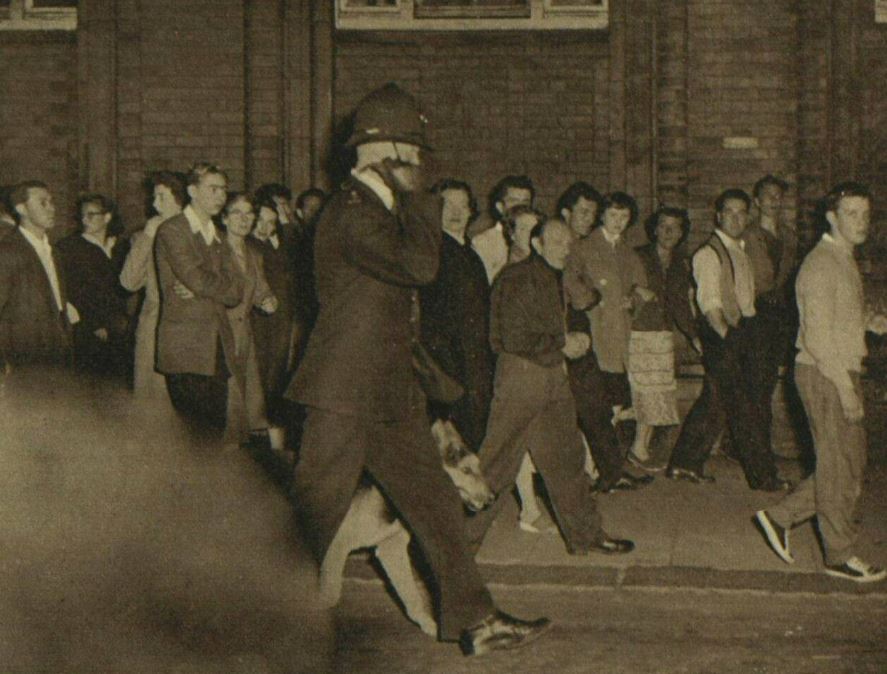
At this hearing, an ’18-year-old waitress was remanded in custody until next Monday after pleading not guilty to using insulting words at Talbot Road, Paddington,’ whilst ‘six white youths’ were remanded on bail for ‘wilful obstruction.’ Meanwhile, an ’18-year-old youth,’ who had gone to Notting Hill with a jack knife ‘out of curiosity,’ was fined £12.
The police also told their side of events in court. The Portsmouth Evening News, 4 September 1958, reported how prosecutor Mr. Christmas Humphreys told of ‘running fights’ in the streets, with both Black and white members of the crowd turning on the police.
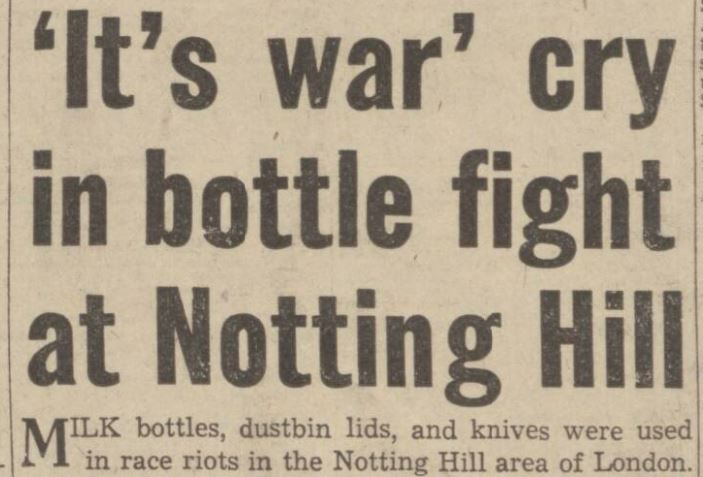
P.C. Raymond Carter ‘said that there were several hundred people in a hostile mood,’ whilst P.C. S. Golding attested that one man called ‘come on, let’s do him’ to the surrounding crowd, which resulted in the policeman being struck several times. Meanwhile P.C. Michael Leech said:
…he saw a coloured man being followed by a large crowd of youths. They started to chase him and were about to pull him to the ground. One man was holding an iron pipe. P.C. Leech said that with other officers he had a fierce struggle with the man.
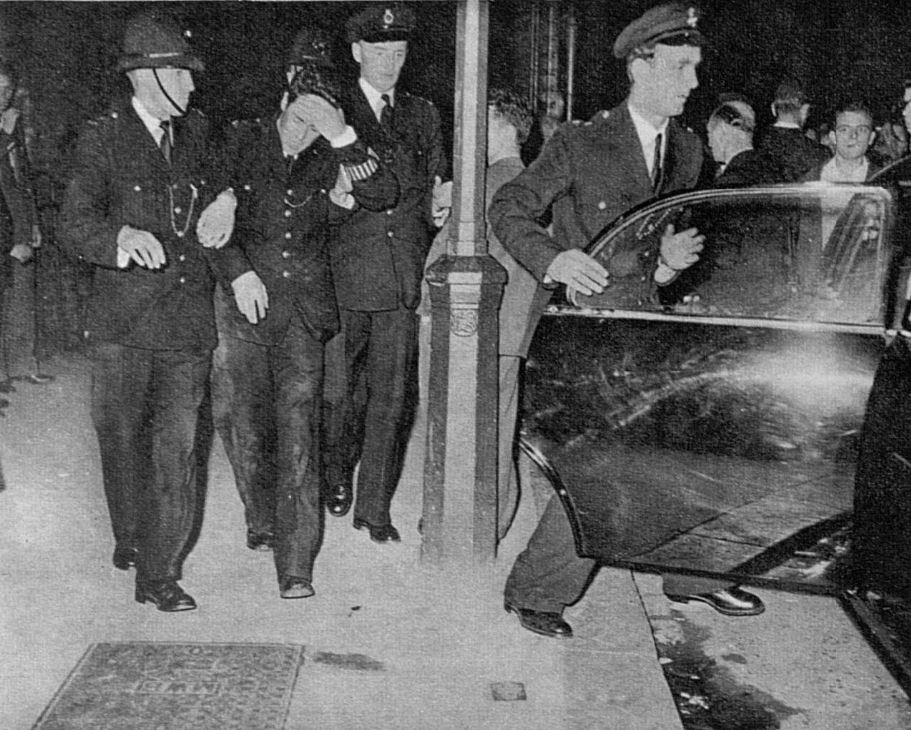
‘I took him back to the C.I.D. car still struggling. While I was getting him into the car milk bottles were flying around.’
This hearing led to eleven men, including two Black men, being sent ‘for trial at the Old Bailey charged with common affray.’ The Manchester Evening News, 4 September 1958, reported on some of the crowd who were to be jailed, who were not the youths that the press painted most of the mob to be:
Chief Superintendent Glandes said he saw Laurie Ward, aged 33, window cleaner, Walter Henry Downes, aged 37, motor trader, Paddington, and a third white man, who was bleeding from the cheek, chasing coloured man Kenneth Bownes and two other coloured men. Ward was shouting: ‘Stop them! Stop them!’
Ward and Downes were jailed for 28 days and six weeks respectively, whilst Bownes faced ’28 days for using threatening behaviour.’
‘It Couldn’t Happen Here’
With the newspapers reporting on the violence in Notting Hill, what opinions did they offer upon it?
The Daily Mirror initially expressed its horror and its shame, an article published on 3 September 1958 beginning:
Every decent person in this country is ashamed of the outbreak of race rioting and hooliganism on British streets. It has come like a kick in the pants to all of us. We have lectured other countries, but failed to prevent the stinking explosion in our own backyard.
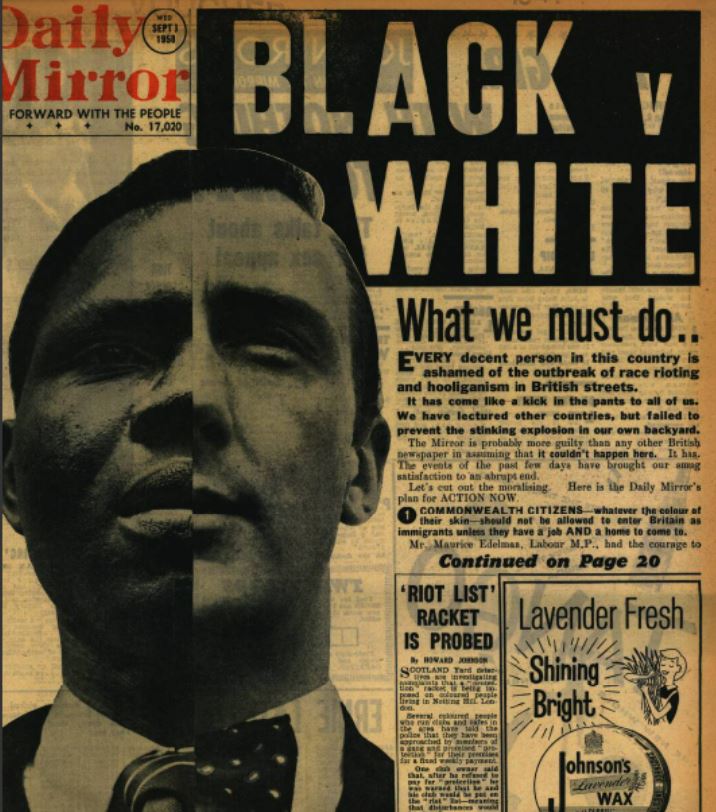
Indeed, the newspaper went on to comment:
The Mirror is probably more guilty than any other British newspaper in assuming that it couldn’t happen here. It has. The events of the past few days have brought our smug satisfaction to an abrupt end.
But it is difficult to reconcile the newspaper’s supposed shame and ignorance with the reality of the situation. On 2 September 1958 the Daily News (London) detailed the police’s suspicion that some kind of racist ‘plot’ had led to the riots:
Early this morning Scotland Yard ‘under-cover’ men were trying to establish whether a plot to stir up racial feeling was responsible for new disturbances in Notting Hill and neighbouring areas last night. Detectives visited cafes and other places seeking information about the ringleaders, if any, of an anti-coloured movement.
But one movement was not staying in the shadows, the newspaper going on to report how:
As dusk fell Sir Oswald Mosley’s British Union Movement held an open-air meeting in the district at which his 19-year-old son Alexander declared: ‘It is time something was done to stop coloured people entering in the country.’
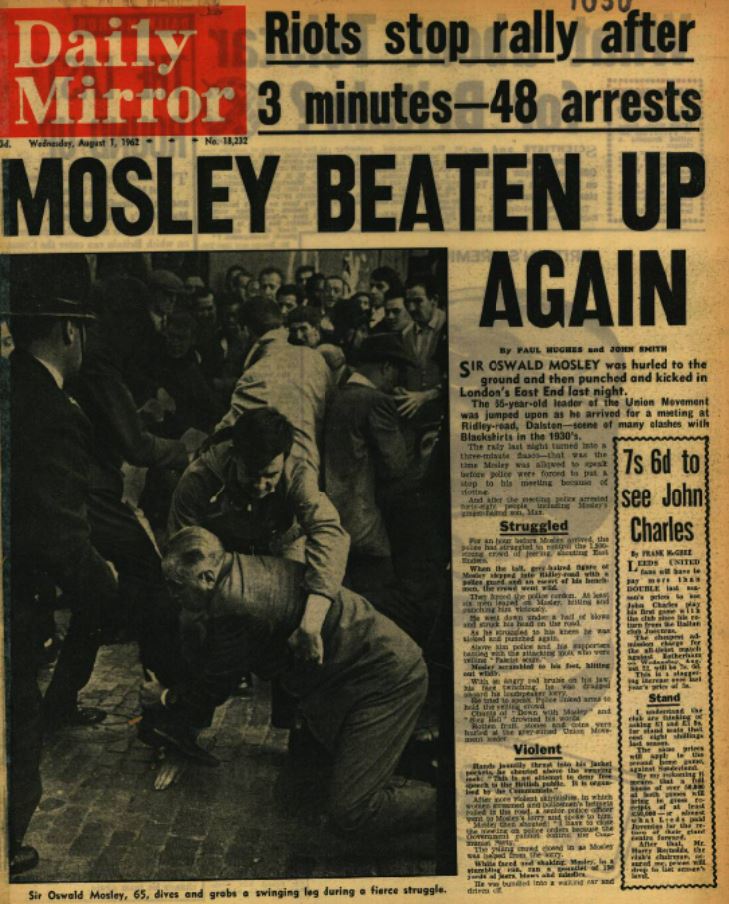
This is why the Daily Mirror’s claims of being shocked and horrified at such elements in British society rings empty. Racist movements expressed their views quite freely, and indeed the newspaper offered its own questionable five point plan to deal with the situation, which demanded that prospective migrants to Britain only be allowed to enter the country ‘unless they have a job and a home to go do.’ It also suggested that some of the recent Black migrants were ‘no-goods,’ and ‘must be sent back home.’
Meanwhile, at the Liberal Party conference, conference chair Mr. G. Granville Slack professed the Party’s ‘horror,’ as Liberals, at ‘the events which have taken place,’ furthermore hoping ‘that people would abstain from acts of violence so that we could get back to a position where people could live side by side in this country whatever their race, colour or creed.’
Despite these wishes, Granville Slack’s words rung empty too, as he professed, according to the Shields Daily News:
…the hope that steps would be taken to improve conditions in some of the countries from which these people come so that it was not so necessary for them to leave their own lands and try to find some other place to get a living.
This colonialist world view had nothing to do with the violence that had erupted in Notting Hill, and the racial tensions simmering below the surface of British society.
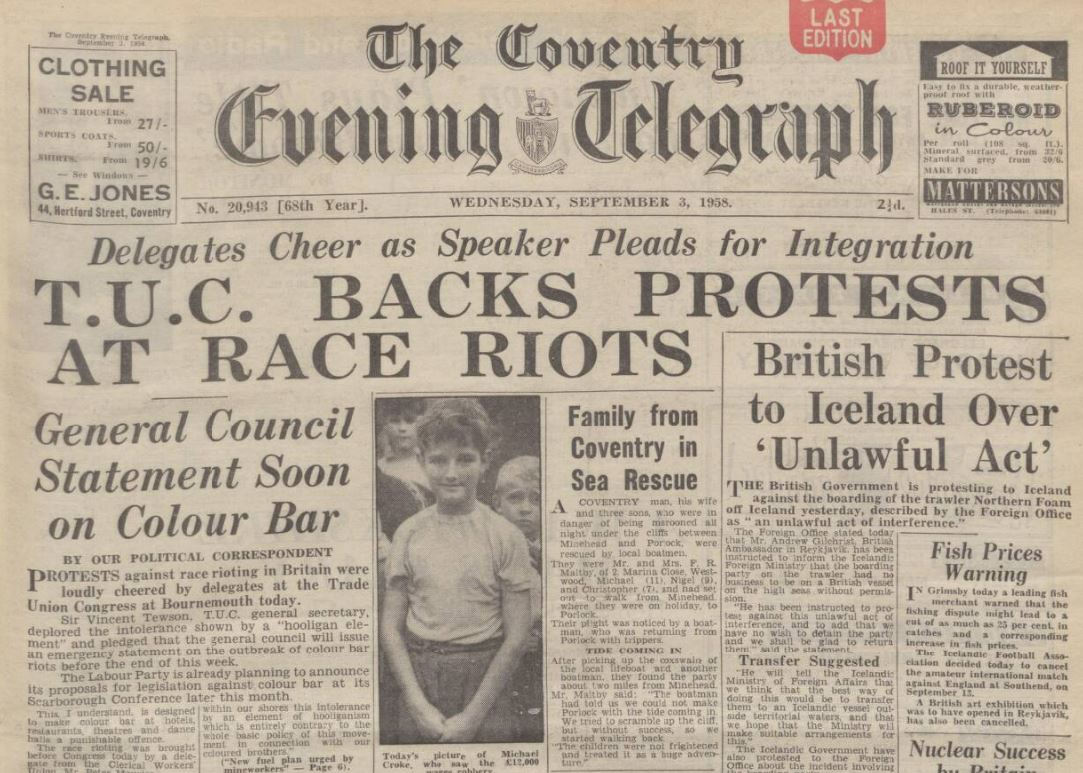
One group, however, that were firmly outraged, were those who attended the Trade Union Congress in Bournemouth in September 1958. The Coventry Evening Telegraph, 3 September 1958, reports how ‘protests against race rioting in Britain were loudly cheered by delegates at the Trade Union Congress at Bournemouth today.’ Meanwhile, delegate for the Clerical Workers’ Union, Mr. Peter Maurice, declared:
‘This congress has always abhorred racial intolerance in any country. Now we have the problem on our own doorstep. It is our problem.’
But what was to be done about the problem?
‘Stars Unite’
The particular difficulty faced in the aftermath of the Notting Hill race riots was that local North Kensington M.P., George Rogers, who represented the Labour Party, wanted ‘to restrict entry of Caribbean migrants into Britain,’ as reported the Daily Herald on 8 September 1958.
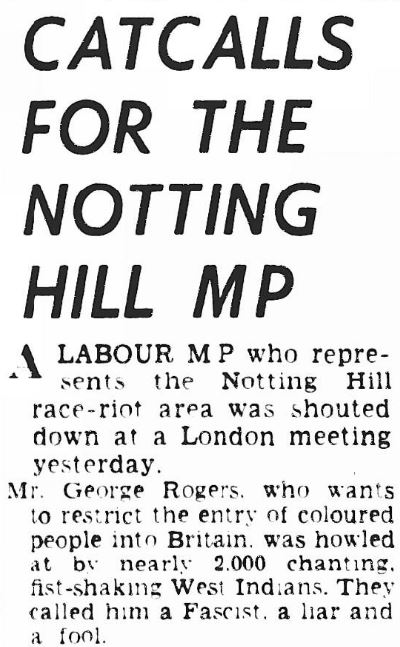
At a meeting intended to pour oil on the troubled waters of the issues faced by his constituents, Rogers was ‘shouted down’ at meeting attended by 2,000 people, many of whom were West Indian. The Daily Herald told of how they:
…called him a Fascist, a liar and a fool. They jumped on their seats and gave him a slow handclap. They halted him in mid-sentence more than 50 times.
Looking back at the words he used to address the crowd, it is not hard to see why he was shouted down. Rogers told the assembly:
I will make a bargain with you – you keep your criminals and we will keep ours. Unless you understand how white people think about the behaviour of some of your people you cannot understand the problem…
Rogers ‘insisted he was against racial discrimination,’ but his claims fell flat.
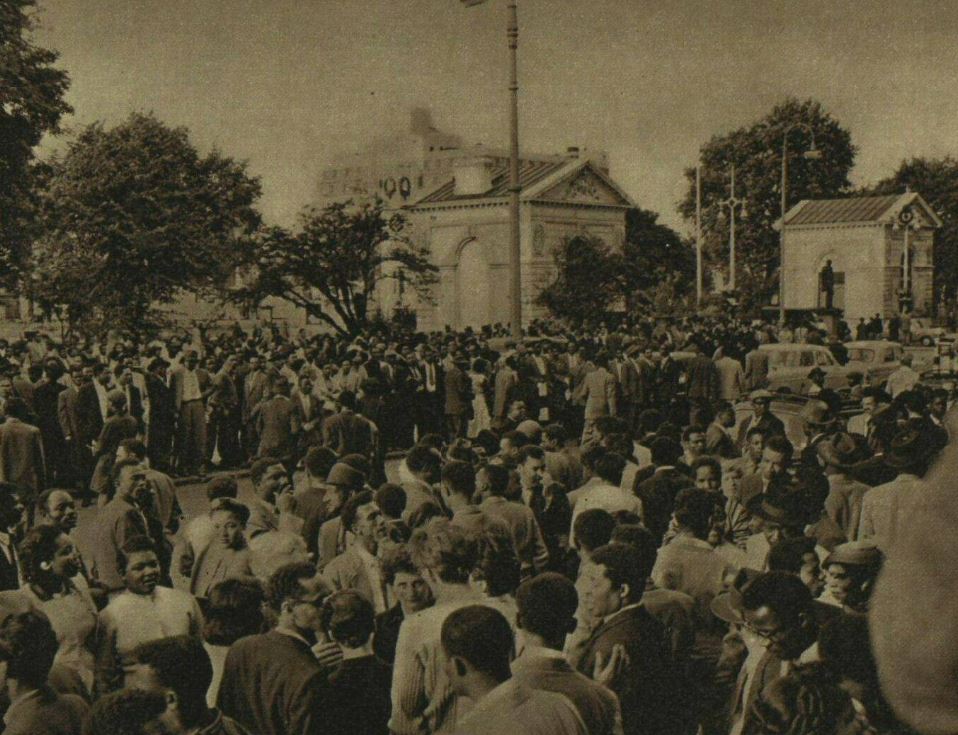
Meanwhile, at the same meeting, was Mr. Norman Manley, Jamaica’s Chief Minister, who had travelled to Britain with Doctor Carl Lacorbiniere, who was the deputy premier of the West Indies Federation. He received a cheer from the crowd when he stated:
‘We are here to give you advice and to challenge decent British public opinion to stamp out things that would shame even a Southern State in America.’
Indeed, Manley and Lacorbiniere’s visit to Notting Hill bought some comfort. Visiting a café in the area, where some who were on remand for incidents relating to the riot had gathered, Manley stated how ‘Anyone who has been charged will be defended.’ The Leicester Evening Mail, 6 September 1958, went on to describe how:
As he walked around streets thronged with coloured and white people, he was stopped every few yards by coloured men and women, and he had a smile and a few words for each of them. Mr. Manley said after his tour that he found the people very calm and steady.
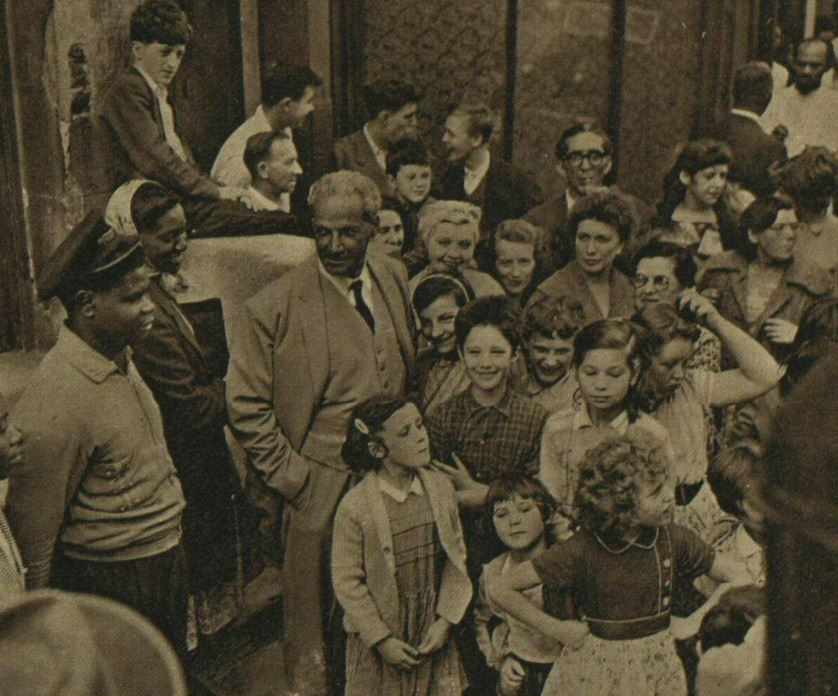
He told them to remain so and to have confidence that justice would be done to them and they would be fully protected. He hopes to arrange two public meetings and said he hoped that M.P.s for the areas where the disturbances occurred would speak to them.
Three days later on 9 September 1958 the Shields Daily News reported how Manley had visited the Colonial Office in London ‘about the racial trouble,’ and met with Colonial Secretary Mr. Alan Lennox-Boyd, and the Parliamentary Under-Secretary for the Colonies, Mr. John Profumo. Profumo (that Profumo) had ‘cut short’ his holiday to attend the meeting. Lennox-Boyd said he was ‘vitally concerned’ about the race riots, whilst Prime Minister Harold Macmillan invited Manley, Lacorbiniere and Prime Minister of Barbados Dr. Hugh Cummins to lunch ‘to discuss the racial disturbances.’
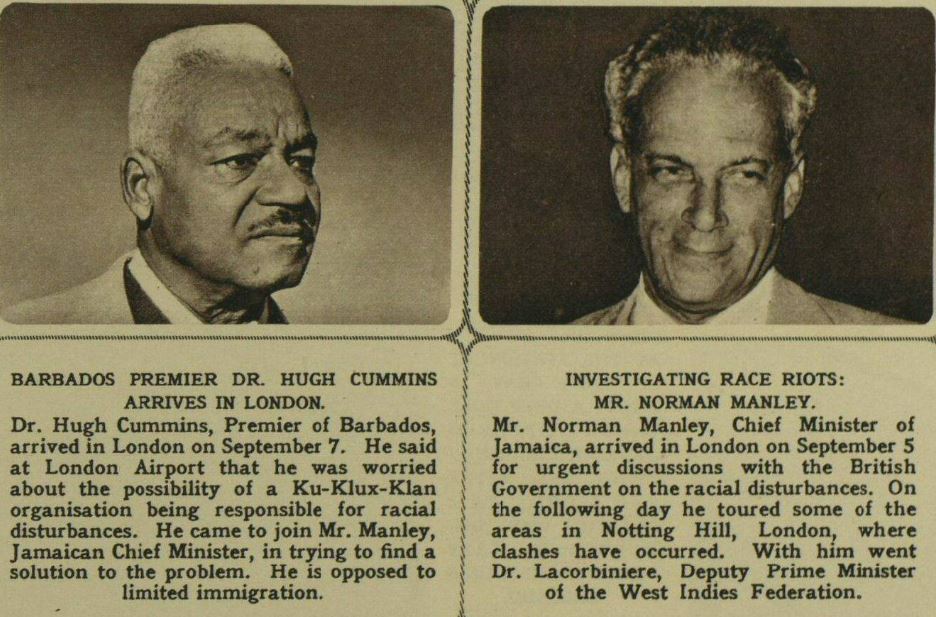
Action was being taken, but for the ordinary Black men and women on the streets of Notting Hill, and elsewhere in Britain, would a few words over a snatched lunch be enough to affect change, to address the very real rot at the heart of a colonial-minded British society and government?
For many, it would not have been enough. On 10 September 1958 the Hartlepool Northern Daily Mail published an article entitled ‘Stars unite to fight race hatred.’ It detailed how:
A number of jazz and popular music stars who signed last week’s call for an end to the racial disorders in Nottingham and Notting Hill, London, have set up a permanent organization designed ‘to fight all kinds of race hatred’ it was announced yesterday. Its first act has been to get the full text of the appeal issued as a leaflet, which has been distributed this week in jazz clubs and on the streets of Notting Hill.
Names added to the appeal included those of Trinidadian pianist Winifred Atwell, jazz musicians Ken Colyer, George Melly, and Russell Quaye, and folk singers Hylda Sims, Ewan MacColl and Bert Lloyd. Action had to be taken, and real change was not going to be affected from the usual corridors of power.
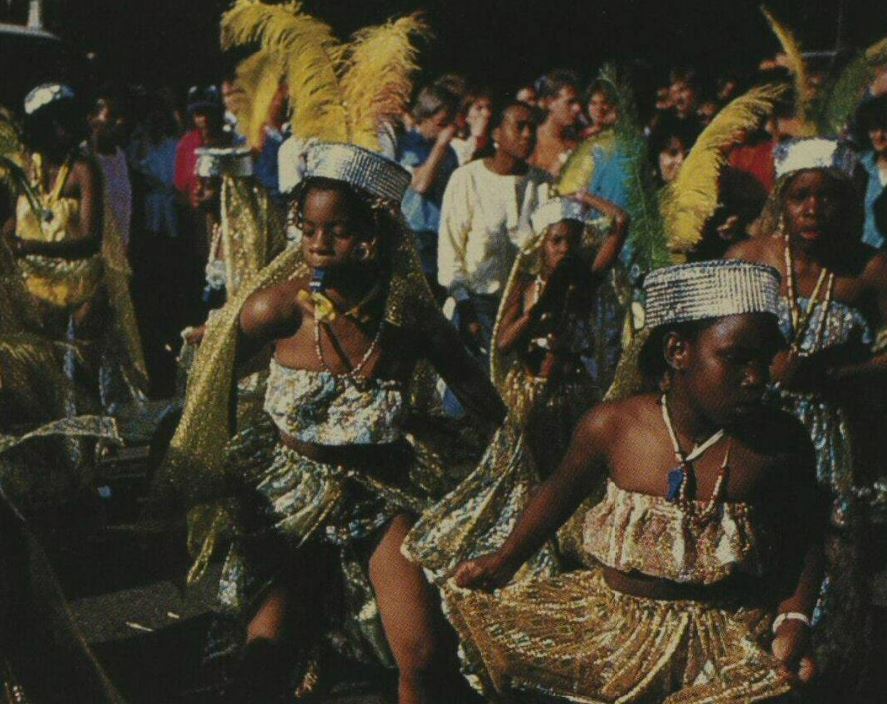
With this in mind, in January 1959 activist Claudia Jones arranged a ‘Caribbean Carnival’ at St. Pancras Town Hall. This was in response to the riots, and race relations in the area at the time. Her carnival would grow and become a precursor of the world-famous Notting Hill Carnival, demonstrating how the healing between communities post the race riots was occasioned at the very heart of such communities, the Black community taking a proud stance against discrimination and violence.
Finally, the issues surrounding the race riots of 1958 are not confined to the past. The legacy of Windrush and the way that generation was treated continue to echo down to the modern day, and it is important that we acknowledge its enduring impact on today’s society.


